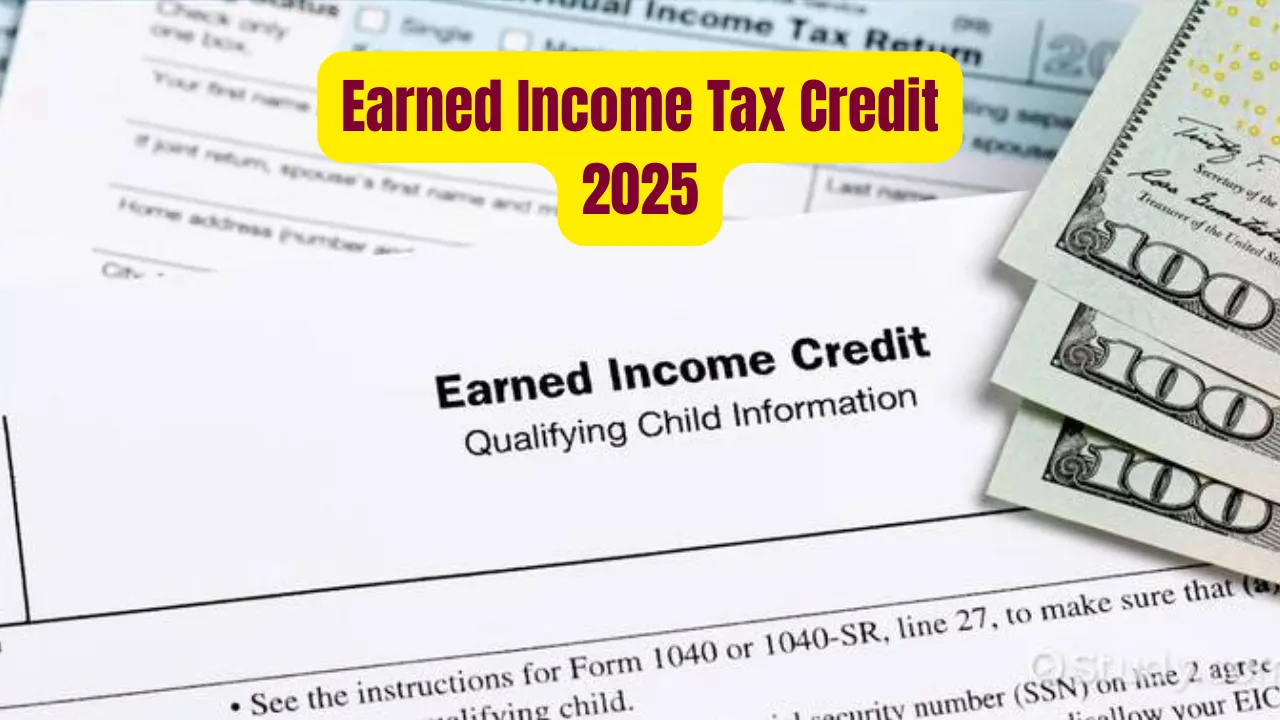Earned Income Tax Credit 2025: The Earned Income Tax Credit (EITC) is one of the most impactful tax benefits available to working Americans, especially for families with children and lower incomes. Since its launch in 1975, the EITC has played a key role in lifting millions of households out of poverty by providing extra financial support through the tax system. As it marks its 50th anniversary in 2025, many workers still remain unaware that they qualify for this valuable credit.
Understanding how the Earned Income Tax Credit 2025 works and what income thresholds determine eligibility is essential for maximizing your refund. With income limits adjusted for inflation each year, knowing where you stand financially can mean the difference between receiving or missing out on a credit that could be worth thousands of dollars.
Earned Income Tax Credit 2025
To qualify for the Earned Income Tax Credit 2025, your earned income and adjusted gross income must fall below specific limits, which vary based on filing status and number of dependents. For instance, a single filer with no children must earn less than $18,591 to qualify, while a married couple with three or more children can earn up to $66,819. These limits ensure the credit is targeted to those who need it most—low- and moderate-income earners.
The credit amount you receive also depends on how many children you claim. On average, eligible taxpayers received about $2,743 in tax year 2023, and similar figures are expected for 2025. To get the EITC, you must file a tax return and claim the credit, even if your income is below the IRS filing threshold.
Overview Table: Earned Income Tax Credit 2025 Income Limits
| Filing Status | Number of Children | Maximum Income (Single) | Maximum Income (Married Jointly) |
| No Children | 0 | $18,591 | $25,511 |
| One Child | 1 | $49,084 | $56,004 |
| Two Children | 2 | $55,768 | $62,688 |
| Three or More Children | 3+ | $59,899 | $66,819 |
The Purpose and History of the EITC
The Earned Income Tax Credit was introduced to support working families by reducing their tax burden and boosting their take-home income. Over the years, it has become one of the most effective anti-poverty tools in the United States. In 2024 alone, over 23 million households benefited from the EITC, receiving a combined total of approximately $64 billion.
One of the reasons the EITC is so powerful is that it’s refundable, meaning even if you owe no tax, you can still receive the full credit amount as a refund. This makes it especially beneficial for families struggling to cover basic living costs.
Commonly Missed Opportunity
Despite its benefits, the IRS estimates that 1 in 5 eligible taxpayers do not claim the EITC. This is often due to confusion about income limits, changes in marital or parental status, or simply not filing a tax return at all. With the IRS offering tools like the EITC Assistant, individuals can check their eligibility easily online. Workers are strongly encouraged to review their eligibility annually, especially after life changes like marriage, divorce, or having a child.
Key Requirements for EITC Eligibility
To qualify for the Earned Income Tax Credit 2025, there are several basic conditions that must be met:
- You must file a tax return, even if you’re not otherwise required to do so.
- You must have earned income, such as wages, salaries, or self-employment income.
- You must have a valid Social Security number for yourself, your spouse (if filing jointly), and all qualifying children.
- You must be a U.S. citizen or resident alien for the entire tax year.
- You must not file Form 2555, which deals with foreign earned income.
In addition to meeting the income limits, you also cannot be claimed as a dependent on someone else’s tax return.
How to Claim the EITC
Claiming the EITC requires that you file your federal income tax return and specifically claim the credit. This is true even if your income is so low that you wouldn’t normally be required to file. The IRS and many community-based organizations offer free tax filing services that help ensure you claim all credits available, including the EITC.
You can also use the IRS EITC Assistant online tool to determine if you qualify and get an estimate of your credit amount. Make sure to gather all income documents, such as W-2s and 1099s, as well as Social Security numbers for each qualifying dependent.
Tax Benefits for Families
Families with children stand to gain the most from the EITC. With larger income limits and higher credit amounts, the EITC can significantly reduce tax liability or even result in a substantial refund. This benefit often helps families cover rent, childcare, groceries, and other necessities.
The EITC also complements other family-related tax credits such as the Child Tax Credit and Child and Dependent Care Credit. You can potentially qualify for more than one of these credits in the same tax year.
Avoiding Mistakes
Some common mistakes that can delay or reduce your EITC refund include:
- Incorrect income reporting
- Claiming ineligible children
- Using incorrect Social Security numbers
- Filing the wrong tax form
It’s important to review your return carefully before submitting it. If you’re unsure, consider working with a tax professional or using IRS-certified assistance services.
FAQs
1. What is the maximum income to qualify for the EITC in 2025?
It depends on your filing status and number of children. For example, the limit is $66,819 for married couples with three or more children.
2. Can I get the EITC if I have no children?
Yes. You can qualify for a smaller credit if your income is below $18,591 (single) or $25,511 (married).
3. How much will I receive from the EITC?
The average payment is around $2,743, but it varies based on income and number of dependents.
4. Do I have to file taxes to get the EITC?
Yes. You must file a federal income tax return and claim the credit.
5. Where can I check if I qualify for the EITC?
Visit the IRS EITC Assistant or irs.gov for tools and resources.
Final Thought
The Earned Income Tax Credit 2025 continues to offer much-needed financial support to working Americans. Whether you’re a parent juggling multiple jobs or a single filer with modest income, this credit can help reduce your tax burden or increase your refund. Don’t leave money on the table—file your taxes and make sure you claim what you’ve earned.







